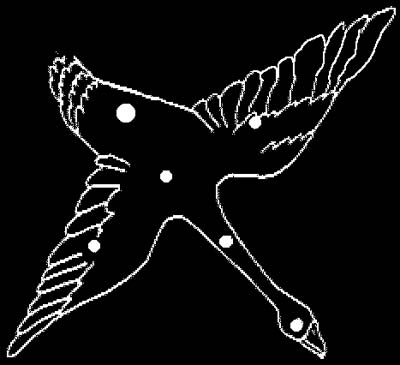In the Milky Way, there is a constellation that resembles a swan soaring gracefully through the sky. This is the constellation Cygnus. This constellation, along with Aquila and Lyra on either side of the Milky Way, forms a tripod-like arrangement (the apex). It is one of the most prominent constellations in the summer night sky. The three main stars (alpha stars) of these three constellations create the famous “Summer Triangle”. Despite being located within the Milky Way, Cygnus is easily recognizable due to its many bright stars.

Constellation Cygnus (Image: fcps.k12)
If we connect the bright stars of Lyra, we will form a large cross shape. It is positioned opposite to the Southern Cross, hence it is referred to as the “Northern Cross”. Ancient Greek astronomers combined the “Northern Cross” with surrounding stars to imagine a swan in flight, with its tail represented by the first magnitude star, Delta Cygni. Not far to the east of Delta Cygni is another famous star, 61 Cygni, which is about 11 light years away from us. Besides the Sun, 61 Cygni is the 13th closest star to our solar system. It is visible to the naked eye on clear nights.
According to Greek mythology, the god Zeus fell in love with Leda, the queen of Sparta, but fearing that his wife Hera would be jealous, he transformed Leda into a swan so that they could meet secretly and she could bear two children (the Gemini constellation). Later, to commemorate this love affair, Zeus created the constellation Cygnus.
Observing the rising and setting of the constellation Cygnus is quite fascinating. Cygnus rises in the Northeast. At this time, it appears as if the swan is tilting its wings to take flight. When it reaches its zenith, its head faces south, slightly towards the west. As it moves to the Northwest, its head dips down, and its tail raises up before it finally sets below the horizon. Like all other stars, the times of rising and setting for Cygnus vary across different seasons. For example, in spring, Cygnus rises at midnight. By early autumn, it rises in the afternoon and is high in the sky after sunset.

Cygnus in the Milky Way (Image: coolcosmos.ipac)


















































